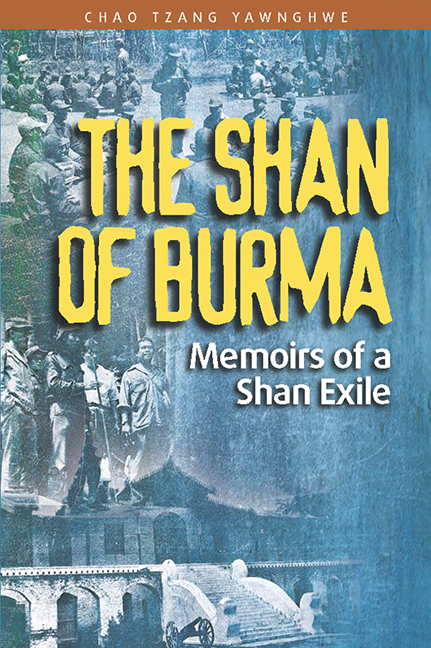Book contents
- Frontmatter
- Contents
- Foreword
- In Memorium
- Preface
- Acknowledgements
- PART ONE AN AUTOBIOGRAPHICAL INTRODUCTION
- PART TWO SHAN-BURMESE RELATIONS
- PART THREE WHO'S WHO IN SHAN STATE POLITICS
- 5 Historical and Political Personalities (A Personal Perspective)
- APPENDICES
- Abbreviations
- Glossary
- Bibliography
- Index
- The Author
5 - Historical and Political Personalities (A Personal Perspective)
from PART THREE - WHO'S WHO IN SHAN STATE POLITICS
Published online by Cambridge University Press: 21 October 2015
- Frontmatter
- Contents
- Foreword
- In Memorium
- Preface
- Acknowledgements
- PART ONE AN AUTOBIOGRAPHICAL INTRODUCTION
- PART TWO SHAN-BURMESE RELATIONS
- PART THREE WHO'S WHO IN SHAN STATE POLITICS
- 5 Historical and Political Personalities (A Personal Perspective)
- APPENDICES
- Abbreviations
- Glossary
- Bibliography
- Index
- The Author
Summary
Alaungpaya
King; founder of the last Burmese dynasty which was named after him — (sometimes referred to as the Konbaung or Mandalay dynasty). A Burman, he ruled from 1752 to 1760. He was also known as U Aung Zeya, the headman of Moksopo village in Shwebo, Upper Burma. He defeated the Mon in Lower Burma, killing and burning mercilessly and indiscriminately. He put an end to the Mon as a political power in Burma, and in the process destroyed their culture and civilization. Like all “unifiers” of Burma, Alaungpaya invaded Siam but died while laying siege to Ayuthia.
Aung Gyi
Brigadier; Burman or Burmese. He was sacked from the Revolutionary Council which staged the 1962 coup. Though not a member of the famed Thirty Comrades, he nonetheless played an important role in building up the pre-independence Burmese armed forces, and the Burma Army. He was particularly prominent in the military government of 1958–60, and was the architect of the army's economic muscle (Burma Defence Industries). Aung Gyi was jailed in the mid-1960s for alleged involvement in a coup attempt against Ne Win. He was released after several years in prison and is presently running a popular cafe in Rangoon.
Aung San
General (pre-independence Burmese armed force, BIA and BDA); Burmese, native of Natmauk. He was regarded as Burma's founding father, one of the four “unifiers”. He gained prominence as a student (Rangoon University) strike leader. He formed a group whose aim was Burma's independence and together with Thakin Thein Pe Myint, Thakin Hla Pe, Thakin Soe and Thakin Than Tun, informally established the Burma Communist Party (BCP, which later split into the White Flag under Than Tun, and the Red Flag under Thakin Soe). Just before the Japanese war, on verge of arrest by the British for subversion, he left the country. Aung San planned to contact the Chinese KMT for aid, but diverted to Japan and was given military training with other Thakins or nationalists (the Thirty Comrades) by the Japanese military intelligence on Hainan Island.
- Type
- Chapter
- Information
- The Shan of BurmaMemoirs of a Shan Exile, pp. 145 - 236Publisher: ISEAS–Yusof Ishak InstitutePrint publication year: 2010

